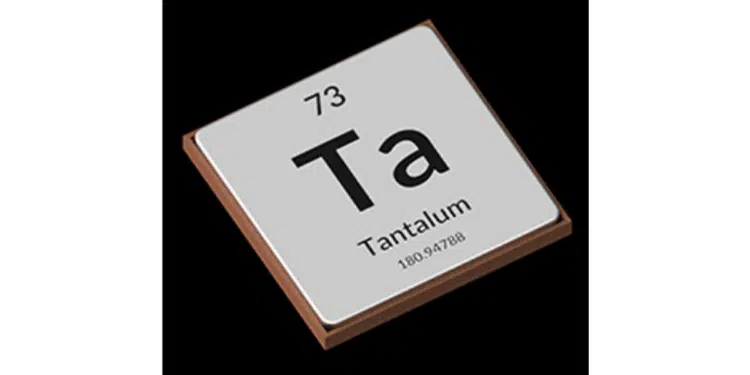Despite the current market situation and high demand for electronic components, tantalum supply chain is getting stronger according to industry sources.
Tantalum for a lifetime
Current shortages and concerns over stable supply of critical commodities such as rare earths, cobalt, and nickel are weighing heavily on the downstream electronics, aerospace, automotive and appliance industries. Tantalum ore supply on the other hand is stronger than ever and ready to support increasing demand1 from tantalum capacitor makers, semiconductor manufacturers and other industries.
This is primarily due to:
- Co-product mining: as demand for lithium continues to rise driven by electric vehicle demand, so too does the volume of tantalum extracted as a co-product of this lithium production. Lithium and tantalum frequently co-exist in hard rock mines in Western Australia, South America, Africa and elsewhere. This tantalum co-product is extracted with relatively minimal incremental environmental impact2, predictable economics, and rising volumes.
- Traceable “conflict-free” artisanal mining: Trade in elements such as tantalum, tin, tungsten and gold from Central African countries is complicated by fear that such trade could fund and perpetuate conflict in that region. For over a decade, robust traceability programs, from mine source through to OEM product delivery have been implemented. These programs are mature, transparent3, are fully understood throughout the tantalum supply chain, and have opened up market for legitimate trade in minerals, including tantalum, from this region.
- Regional supply balance: historically, tantalum ore supply has been skewed towards one region or another. Until the mid-2010s, Western Australia was the largest source: a stable industrial scale source that became relatively expensive. This was entirely replaced by supply from Central Africa: an artisanal scale source that is more economical but supply is less stable. Tantalum as a co-product of lithium mining re-introduces industrial scale stability, does so economically, and should result in a balanced global supply without over-reliance on any one region. There is an increasingly healthy balance of tantalum supply from Australia, South America, Central Africa (also other African nations such as Mozambique), China, and emerging supply sources elsewhere. Disruption in any one location should, therefore, not have an oversized impact on global supply of tantalum.
- Established recycling: each year approximately 30% of all tantalum sold to end users comes from high purity recycled tantalum material. Tantalum recycling is long-established and the material is actively traded and much sought after by processors.
- Demand stability/supply confidence: fluctuating demand disrupts the upstream supply chain, which in turn creates further demand instability. The supply chain “Bullwhip Effect”4 can be exaggerated when downstream players fear upstream supply shortages. Double ordering or, worse, “design out” occurs. ABT5 has been a refrain in the tantalum industry in the past as a result of this type of instability. In recent years however, end user confidence has been restored. Tantalum demand has stabilized, tantalum is being “designed in” and no one end-use segment dominates. Stable demand begets stable supply which further encourages demand growth.
Quoting Roskill Information Services, a metal market and analyst company, “In the long-term, we expect the (tantalum) industry to see limited deficits and surpluses that will not amount to more than a few weeks of demand in any given year and that will be smoothed out by inventory in most cases.”
Tantalum has indispensable properties when used in electronic components, aircraft engines, medical implants and countless other applications. Historically, the industry’s Achilles’ heel6 has been intermittent (real or perceived) supply chain disruptions. Existing and emerging stable tantalum sources should alleviate supply concerns.
1 Consumption is currently at approx. 2200 tonnes per year and predicted to grow 3-4% per year through 2029.
2 The tantalum is contained in the same ore body as lithium. To meet the ever increasing demand for electric vehicles, lithium will be mined whether the tantalum is extracted as a co-product or not. So no initial extra mining activity is required to extract the tantalum ore from the mine pit.
3 For example, tantalum and other mineral smelters (a.k.a. processors) are audited annually by the Responsible Minerals Initiative. There are currently approx. 37 tantalum suppliers conformant to this audit protocol. Conformant Tantalum Smelters (responsiblemineralsinitiative.org).
4 The term “Bullwhip Effect” was coined by Stanford University Professor Hau Lee. The Bullwhip Effect in Supply Chains (mit.edu)
5 Anything But Tantalum!6 Achilles’ mom held his heel and dipped him in the River Styx , the river’s water making him invulnerable. She forgot to dip one part of the poor kid – his heel!





























